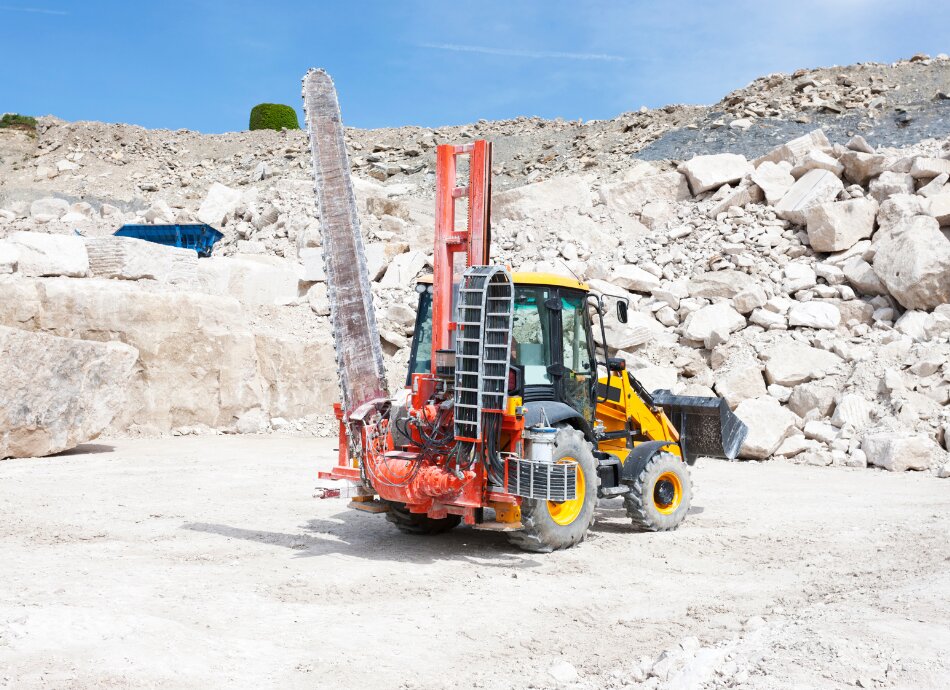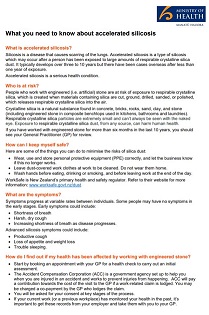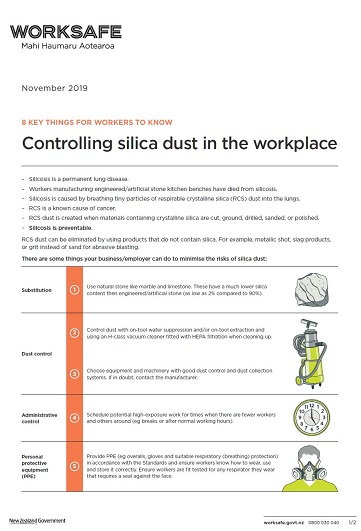|
When to see your doctor about silicosis |
|
If you work in any of the industries listed below and have the following symptoms, see your GP or doctor to get checked for silicosis:
|
Where might I be exposed to silica?
You are at risk of getting silicosis if you work in the following industries:
- engineered stone benchtops (these benchtops have 90% silica)
- stone masonry and stone cutting
- mining and quarrying
- construction and demolition
- pottery, ceramics and glass manufacturing
- sandblasting.








